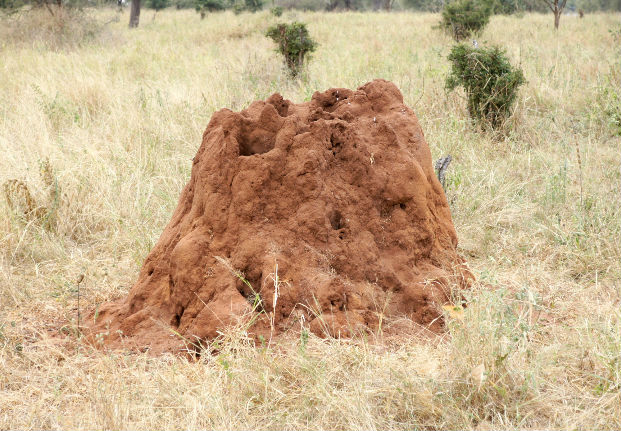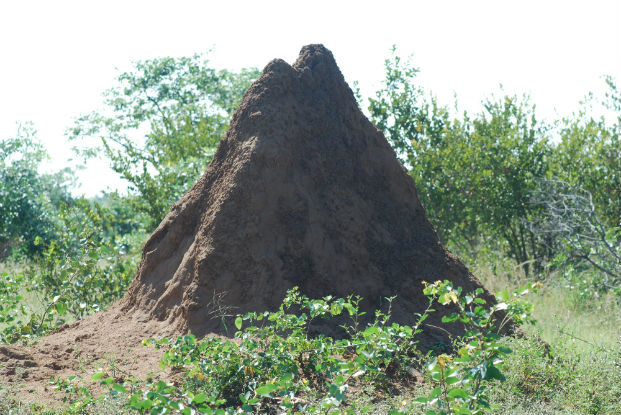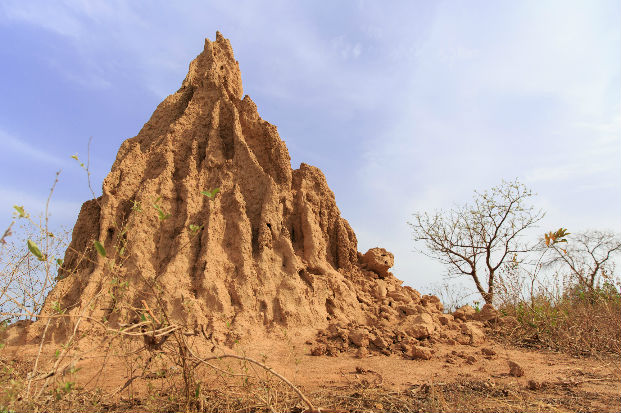The fungus-growing termite is the most common and widely distributed member of all Macrotermes in southern Africa. They live in nests that are kept a constant temperature by a remarkable piece of engineering, a spiralled mound consisting of a network of vents and tunnels set around one central chimney. As their names suggests these termites actually cultivate fungus to digest the food which they are unable to do so themselves. General facts about termites.
6 facts about fungus-growing termites
1. Fungi turns termite faeces into edible compost
Fungus-growing termite workers will chew up and eat dead and decaying plant material. Because they are unable to fully digest it they return to the nest and excrete it. The job of digesting these faeces is done by fungi. The resulting compost is then eaten by the colony.
Professor Brian Cox explores the function of a termite city and what you can actually find inside one. Taken from Wonders of Life. Video source: BBC Earth
2. Fungus-growing termites use swarm intelligence is used to build complex structures
Fungus-growing termites work individually using a process called swarm intelligence to build complex temperature controlled mounds with specialist chambers and fungal gardens. There is no central blueprint or coordinator for this outstanding piece of engineering.
3. Termite mounds are strong enough to be used as elephant running posts
The fungus-growing termites build large mounds which are typically 2 to 3 metres high. The mounds, known as termitaria, are made with a mixture of soil, saliva and faeces which dry as hard as concrete. These structures can withstand being used as a rubbing post by elephants.
4. Termites top up the evaporation cooling system with water
As well as an elaborate air conditioning system of hot and cold air being exchanged through a central chimney and a network of vents and tunnels there is an evaporation cooling system which the fungus-growing termite workers keep topped up with water.
5. Fungus-growing termites may create back-up collections of fungus
Fungus-growing termites rely on fungus to digest their food into an edible compost. After the rains they will sometimes carry the spores of this fungus outside. This may be to disperse it further afield as a back up to their own supplies.
6. The termite nest is kept at a constant 31 degrees
A fungus-growing termite nest sits 1 m below the ground. It is kept at a constant temperature of 31 degrees centigrade by a spiralled mound which emits hot stale air through tiny holes in its walls which in turn allow cold fresh air in. This then circulates around a network of tunnels.
Vote for the fact you find most fascinating
A fungus-growing termite nest sits 1 m below the ground. It is kept at a constant temperature of 31 degrees centigrade by a spiralled mound which emits hot stale air through tiny holes in its walls which in turn allow cold fresh air in. This then circulates around a network of tunnels.
Fungus-growing termites work individually using a process called swarm intelligence to build complex temperature controlled mounds with specialist chambers and fungal gardens. There is no central blueprint or coordinator for this outstanding piece of engineering.
The fungus-growing termites build large mounds which are typically 2 to 3 metres high. The mounds, known as termitaria, are made with a mixture of soil, saliva and faeces which dry as hard as concrete. These structures can withstand being used as a rubbing post by elephants.
Fungus-growing termite workers will chew up and eat dead and decaying plant material. Because they are unable to fully digest it they return to the nest and excrete it. The job of digesting these faeces is done by fungi. The resulting compost is then eaten by the colony.
As well as an elaborate air conditioning system of hot and cold air being exchanged through a central chimney and a network of vents and tunnels there is an evaporation cooling system which the fungus-growing termite workers keep topped up with water.
Fungus-growing termites rely on fungus to digest their food into an edible compost. After the rains they will sometimes carry the spores of this fungus outside. This may be to disperse it further afield as a back up to their own supplies.






